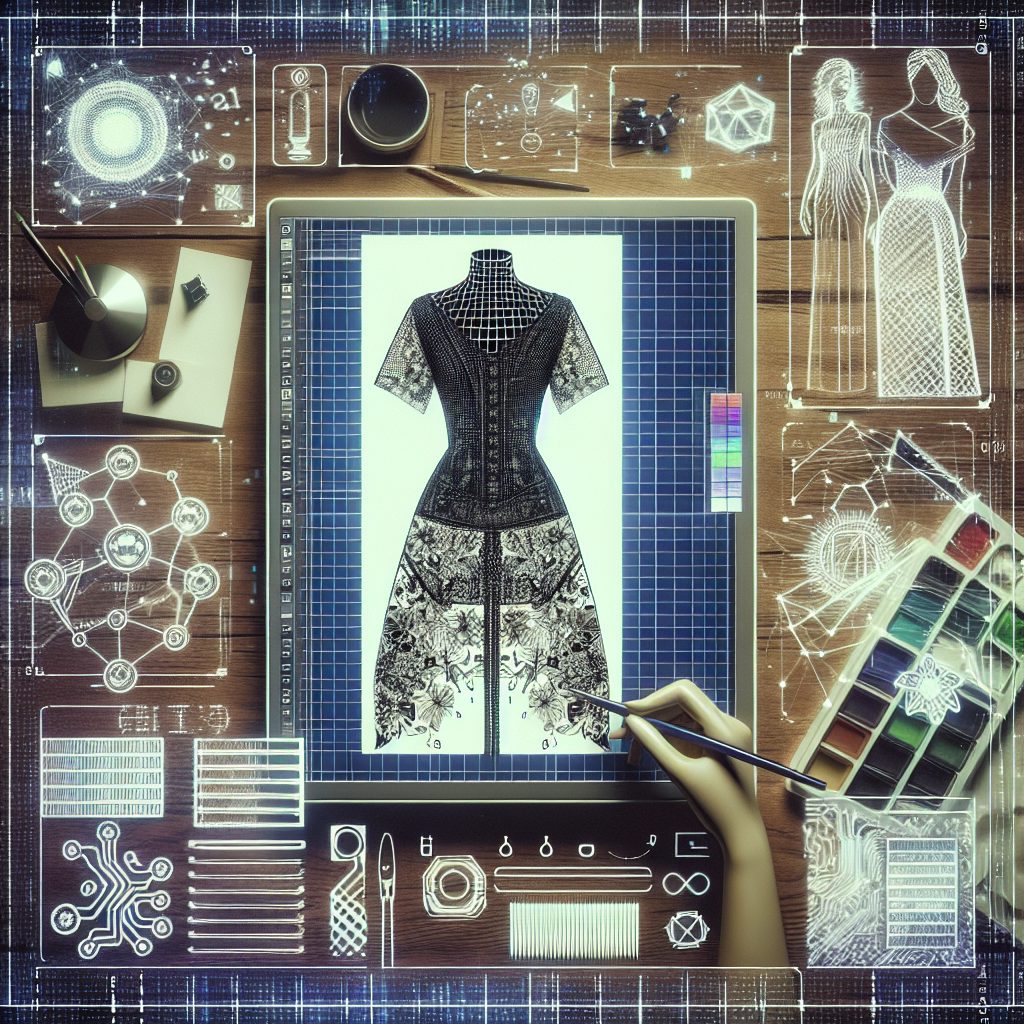Artificial Intelligence (AI) has been transforming various industries, and the fashion industry is no exception. With the rise of AI-powered fashion design tools, designers now have access to powerful technology that enhances their creativity and productivity. These tools use machine learning algorithms to analyze trends, generate designs, and even predict future fashion trends. In this article, we will explore how AI is revolutionizing the fashion design process and how designers can leverage these tools to stay ahead of the curve.
AI in Fashion Design
AI-powered fashion design tools are changing the way designers create and innovate. These tools can analyze vast amounts of data, such as social media trends, consumer preferences, and historical fashion data, to generate insights that can inform design decisions. For example, AI can analyze images from fashion shows, street style photos, and online shopping data to identify emerging trends and patterns.
One of the key benefits of AI in fashion design is its ability to streamline the design process. Designers can use AI-powered tools to generate design ideas, create mood boards, and even develop digital prototypes. This not only saves time but also allows designers to explore more creative ideas and iterate on designs more quickly.
Another advantage of AI in fashion design is its predictive capabilities. By analyzing data from past fashion trends and consumer behavior, AI can forecast future trends and help designers anticipate what styles will be popular in the upcoming seasons. This allows designers to create collections that are both on-trend and commercially successful.
AI-powered fashion design tools also offer new opportunities for customization and personalization. With AI, designers can create personalized designs for individual customers based on their preferences, body measurements, and style preferences. This level of customization can enhance the customer experience and drive sales for fashion brands.
Overall, AI in fashion design is helping designers push the boundaries of creativity, increase efficiency, and stay ahead of the competition in an increasingly fast-paced industry.
How AI is Enhancing Creativity in Fashion Design
AI is enhancing creativity in fashion design in several ways. First, AI-powered tools can help designers generate new design ideas by analyzing vast amounts of data and identifying patterns and trends. By analyzing images, text, and other data sources, AI can inspire designers with fresh ideas and innovative concepts.
Second, AI can assist designers in the design process by providing recommendations and suggestions based on the data it has analyzed. For example, AI-powered tools can suggest color palettes, fabric choices, and design elements that are likely to resonate with consumers. This can help designers make more informed decisions and create designs that are more likely to be successful in the market.
Third, AI can help designers experiment with new techniques and styles by generating digital prototypes and mock-ups. By quickly iterating on designs and exploring different options, designers can push the boundaries of their creativity and develop unique and innovative designs.
Overall, AI is enhancing creativity in fashion design by providing designers with new sources of inspiration, assisting them in the design process, and enabling them to experiment with new ideas and techniques.
How AI is Improving Productivity in Fashion Design
In addition to enhancing creativity, AI is also improving productivity in fashion design. AI-powered tools can automate repetitive tasks, such as trend analysis, pattern recognition, and color matching, allowing designers to focus on more creative and strategic aspects of the design process.
By automating these tasks, AI can save designers time and reduce the risk of human error. This can help designers work more efficiently and effectively, leading to faster design cycles and quicker time-to-market for new collections.
AI can also help designers manage their workflows more effectively by organizing and categorizing design assets, tracking project timelines, and coordinating collaboration between team members. This can improve communication and coordination within design teams, leading to smoother and more efficient design processes.
Overall, AI is improving productivity in fashion design by automating repetitive tasks, streamlining workflows, and enabling designers to work more efficiently and effectively.
FAQs
Q: How can designers incorporate AI into their design process?
A: Designers can incorporate AI into their design process by using AI-powered tools and platforms that are specifically designed for fashion design. These tools can help designers generate design ideas, analyze trends, develop digital prototypes, and personalize designs for individual customers.
Q: Will AI replace human designers in the fashion industry?
A: While AI is transforming the fashion industry, it is unlikely to replace human designers entirely. AI can assist designers in the creative process, but human creativity, intuition, and artistic vision are still essential to creating truly innovative and unique designs.
Q: How can designers stay ahead of the curve with AI-powered fashion design tools?
A: Designers can stay ahead of the curve by embracing AI-powered tools and incorporating them into their design process. By leveraging AI to analyze trends, generate ideas, and personalize designs, designers can create cutting-edge collections that resonate with consumers and stand out in the market.
Q: What are some examples of AI-powered fashion design tools?
A: Some examples of AI-powered fashion design tools include platforms like Daz 3D, which uses AI to generate 3D models and digital prototypes, and Stitch Fix, which uses AI to personalize clothing recommendations for individual customers. Other examples include tools like Adobe Sensei, which uses AI to enhance creative workflows and streamline design processes.
In conclusion, AI-powered fashion design tools are revolutionizing the way designers create, innovate, and stay ahead of the competition. By leveraging AI to enhance creativity and productivity, designers can push the boundaries of their creativity, streamline their workflows, and create collections that resonate with consumers. As AI continues to evolve and become more integrated into the fashion industry, designers who embrace this technology will be well-positioned to succeed in an increasingly competitive and fast-paced market.

